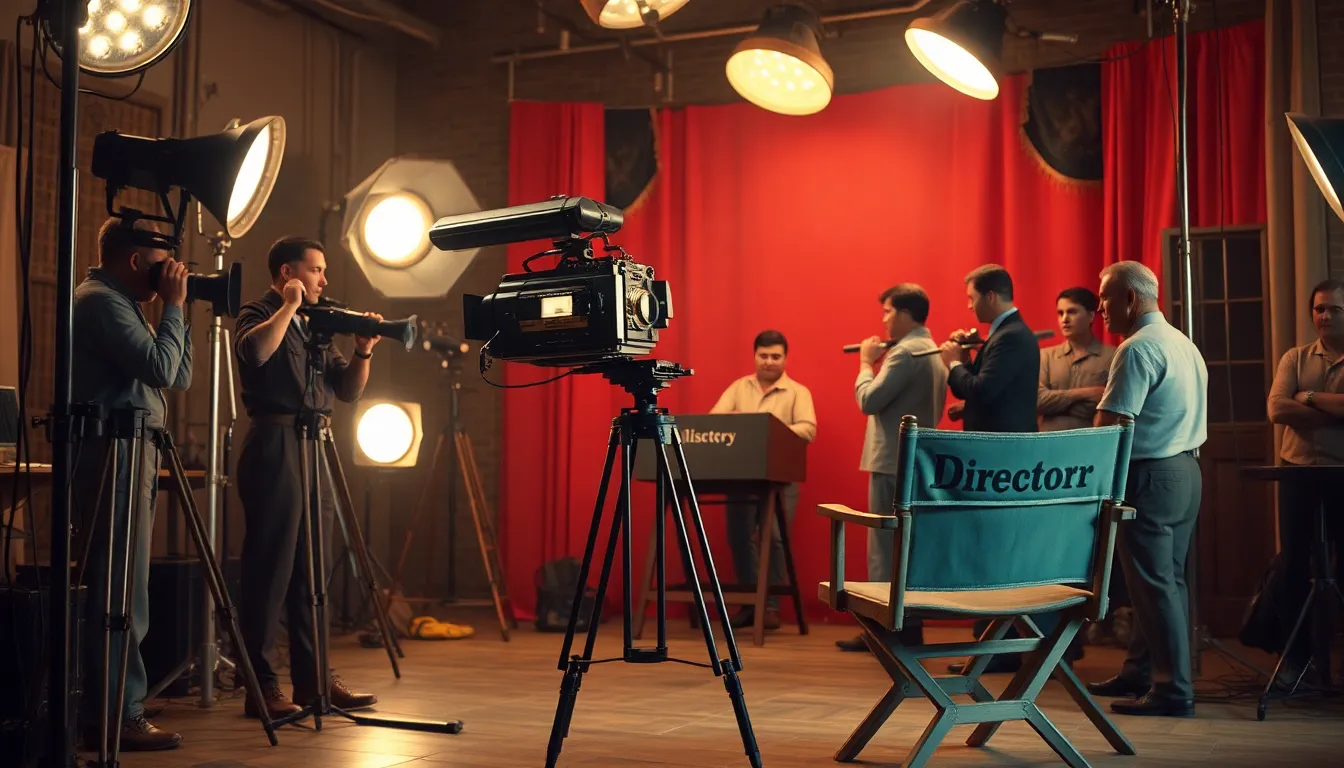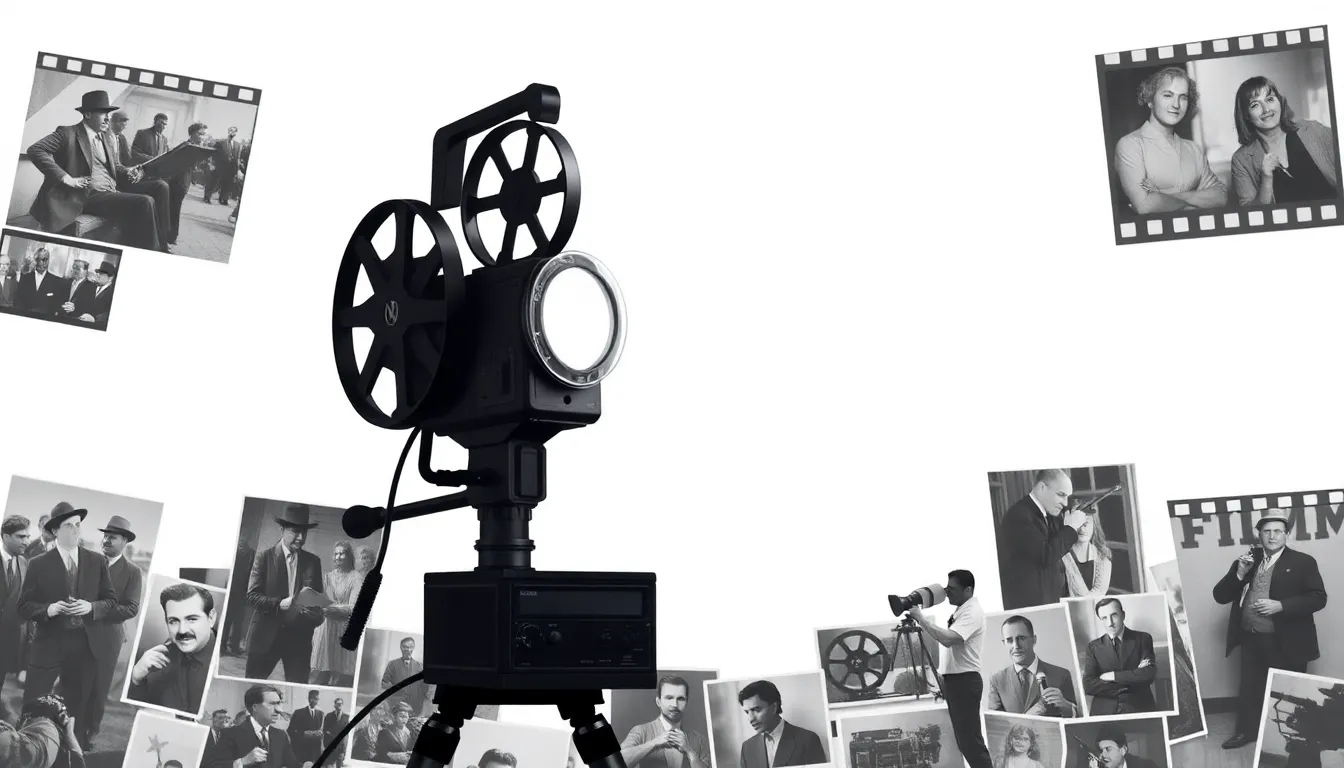From the flickering shadows of early cinema to the dazzling spectacles of today, the history of narrative film is nothing short of a rollercoaster ride through time. Imagine a world where storytelling danced on the silver screen, captivating audiences long before smartphones stole the spotlight. It’s a journey filled with innovation, creativity, and a few questionable fashion choices that would make anyone cringe.
A History of Narrative Film
Narrative film emerged from early experimentation in visual storytelling, evolving significantly through technical and artistic advancements. Early innovators laid the groundwork, while prominent figures in the silent era shaped the industry’s direction.
Early Innovations in Filmmaking
Cinematography began in the late 19th century, marking the inception of narrative film. Innovations like the Kinetoscope and the Lumière brothers’ Cinématographe allowed filmmakers to capture movement, enabling the transition from static images to moving pictures. Pioneers such as Georges Méliès pioneered techniques like stop-motion and narrative structure in films like “A Trip to the Moon” (1902), often blending fantasy and storytelling. Together, these innovations set the stage for more complex narratives, paving the way for future storytellers in the film industry.
Key Figures in the Silent Era
D.W. Griffith emerged as a significant figure during the silent era, transforming cinematic storytelling with “The Birth of a Nation” (1915). This film introduced techniques like cross-cutting and close-ups, enriching narrative depth. Charlie Chaplin, known for his comedic genius, emphasized character development in films such as “The Kid” (1921), showcasing emotional storytelling. Other influential figures, including Buster Keaton and Sergei Eisenstein, further advanced cinematic language and techniques, contributing unique perspectives and styles to narrative film. Collectively, their contributions established a foundation for modern filmmaking.
The Rise of Feature-Length Films

Feature-length films emerged as a dominant storytelling medium in the early 20th century. As filmmakers explored longer narratives, audiences began to appreciate more complex stories.
The Transition to Sound
Silent films faced significant changes with the introduction of synchronized sound in the late 1920s. “The Jazz Singer,” released in 1927, marked a pivotal moment, featuring synchronized dialogue and music. This innovation transformed the film industry, compelling studios to adapt storytelling approaches to engage audiences with sound. Many actors transitioned from silent performances to vocal acting, reshaping character portrayal. Audiences embraced this new dimension, enhancing their overall cinematic experience.
Pioneering Directors and Their Impact
Directors significantly shaped the evolution of feature-length films. D.W. Griffith, known for “The Birth of a Nation,” pioneered narrative techniques, including cross-cutting and close-ups. These methods enriched storytelling and influenced countless filmmakers. Additionally, Frank Capra and Alfred Hitchcock introduced distinct styles, transforming genres such as drama and suspense. Their unique approaches captivated audiences and expanded the possibilities of narrative film. Many contemporary filmmakers cite these pioneers as inspirations, demonstrating their lasting influence on cinematic storytelling.
The Golden Age of Hollywood
The Golden Age of Hollywood spanned from the late 1920s to the early 1960s, a period characterized by significant advancements in filmmaking and storytelling. This era witnessed the rise of the studio system, where major studios dominated production and distribution.
Studio System and Star Power
The studio system centralized filmmaking in Hollywood, controlling every aspect from production to marketing. MGM, Warner Bros., and Paramount became major players, churning out films that attracted large audiences. Star power flourished during this time, as actors like Humphrey Bogart and Katharine Hepburn became household names. Actors signed long-term contracts, ensuring a steady supply of talent for studios. The carefully curated images of stars influenced public perception, making celebrities integral to film promotion. Studios leveraged this star power to create blockbuster films, which solidified their dominance.
Genres That Defined an Era
Genres flourished during Hollywood’s Golden Age, captivating diverse audiences with unique narratives. Musicals swept the screens, with films like “Singin’ in the Rain” showcasing elaborate choreography and star-studded casts. Film noir emerged, emphasizing darker themes and complex characters, as shown in “Double Indemnity.” Westerns captivated viewers with tales of rugged cowboys and frontier justice, illustrated in classics like “Stagecoach.” Comedies provided much-needed laughter through the antics of Marx Brothers and Charlie Chaplin. These genres not only entertained but also reflected cultural attitudes and societal changes, contributing to the Golden Age’s lasting legacy.
Innovation and Experimentation
Innovation and experimentation have continually shaped the narrative film landscape, allowing for unique expressions of storytelling.
The Influence of Global Cinema
Global cinema significantly impacted narrative film by introducing diverse storytelling traditions and cultural perspectives. Japanese filmmakers, such as Akira Kurosawa, influenced Hollywood with techniques like the use of wide shots and complex character arcs. European directors, particularly from France and Italy, brought innovative editing and neorealism into the mix. The impact of Indian cinema expanded narrative forms through vibrant storytelling and musical integration. Exposure to varied styles enriched filmmakers’ techniques worldwide, creating a more dynamic cinematic landscape. Global influences ensure that narrative films today reflect a tapestry of voices, contributing to their evolution.
Technological Advancements in Film
Technological advancements revolutionized narrative film by enhancing visual storytelling and expanding creative possibilities. The introduction of color film in the 1930s allowed for deeper emotional resonance and aesthetic appeal. Developments in special effects transformed fantasy narratives, making previously unimaginable scenes possible. Digital editing software revolutionized post-production processes, enabling filmmakers to manipulate footage with precision and creativity. The rise of 3D technology added a new dimension to narratives, engaging audiences in immersive experiences. Innovations in streaming platforms also altered distribution methods, allowing broader access to diverse stories and reshaping how audiences engage with films today.
Modern Narrative Techniques
Modern narrative techniques in film reflect ongoing innovations that enhance storytelling. Filmmakers continue to experiment with structure and form, pushing the boundaries of traditional narratives.
The Evolution of Storytelling
Storytelling has evolved significantly, transitioning from linear plots to intricate narratives. Non-linear storytelling captivates audiences, engaging them on multiple levels. Directors use flashbacks and parallel storylines to enrich their tales, creating deeper connections with characters. Innovative films often incorporate multiple perspectives, allowing viewers to experience the narrative from various angles. This shift in storytelling has heightened emotional engagement, making films resonate with audiences more profoundly.
Influence of Television and Streaming Services
Television and streaming services have transformed narrative techniques in film. Serialization allows for extended plot development, giving characters more time to evolve. Audience engagement has increased as viewers binge-watch series, immersing themselves in longer arcs. Platforms like Netflix and Hulu prioritize diverse storytelling, showcasing global filmmakers and unique perspectives. By integrating features like interactive storytelling, these services further enhance viewer participation. The impact of such platforms continues to reshape audience expectations, making narrative depth a core element of modern film.
Conclusion
The journey of narrative film showcases an impressive evolution driven by innovation and creativity. From the early experimentation with moving images to the sophisticated storytelling techniques of today filmmakers have continually pushed the boundaries of the medium. The integration of technology and diverse cultural perspectives has enriched narratives allowing for deeper emotional connections and engagement.
As the industry adapts to new platforms and audience expectations the future of narrative film remains bright. It promises to deliver even more compelling stories that resonate with audiences worldwide. The legacy of pioneers and the ongoing exploration of narrative forms ensure that film will continue to captivate and inspire for generations to come.

